A W-9 form is a critical tax document that businesses and contractors need to understand. Correctly filling one out is essential to avoiding issues.
What is a W-9 Form?
A W-9 form, officially called the “Request for Taxpayer Identification Number and Certification,” is an Internal Revenue Service (IRS) tax form used to gather info on contractors, freelancers, or vendors a business pays. A W-9 requires you to provide your name, business name if applicable, mailing address, tax identification number (usually a Social Security number or employer identification number), and tax classification. This allows the business paying you to report your payments to the IRS accurately. Essentially, it confirms your tax identification information, and the payer must issue you a 1099 form later if you earn over $600 from them.
When to Use a W-9 Form
A W-9 form needs to be filled out and submitted in the following situations:
Who Uses a W-9 Form
There are a few key entities that use W-9 forms, including:
- Businesses paying independent contractors, freelancers, consultants, etc., more than $600 in a tax year. This allows them to issue a 1099-NEC later on.
- Banks and financial institutions should adequately track interest earned.
- Real estate agents will report earnings on rented/leased property.
- Law firms will report settlements and judgments paid to clients.
- Any entity that pays an individual or business entity for services provided.
When Should a W-9 Be Filled Out and Submitted
There are several instances in which form W-9 needs to be filled out, including:
- When starting work with a new client or business that will pay you over $600. This is so they can properly document your tax information from the start.
- Upon request from a business or entity that has paid you over $600 in a tax year. They will need your W-9 form before issuing you a 1099 form.
- Upon opening an account with a financial entity, if you expect to earn interest, they have to report to the IRS. For example, on high-yield saving accounts or CDs.
When renting out or leasing property, the management company or platform can track and report your income to the IRS.
The key thing to remember is anytime you earn income that needs to be reported to the tax authorities, expect to fill out a W-9 form. This allows all parties to handle business documents and tax forms correctly.
How to Fill a W-9 Online: Step-by-Step Instructions
Filling out a W-9 form correctly is critical to avoiding issues and delays in getting paid. Doing it online makes the process fast and easy. Follow our 5-step guide below:
Step 1: Download a W-9 Form
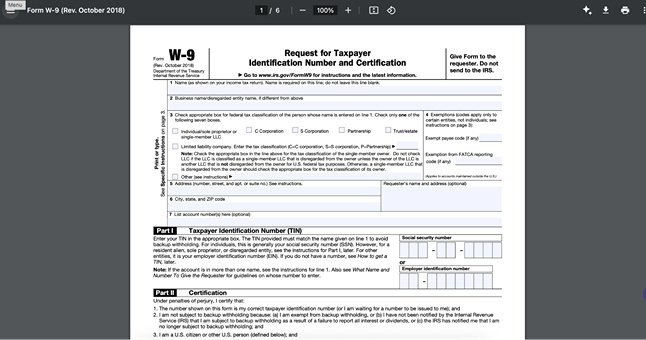
Start by downloading a fresh, untouched W-9 form directly from the IRS website (www.irs.gov). Under the Forms & Instructions section, search for “Form W-9”. Download the latest revision as a printable PDF file. This ensures you have the most up-to-date version. Or simply download the W-9 here.
Step 2: Upload the W9 to Signaturely
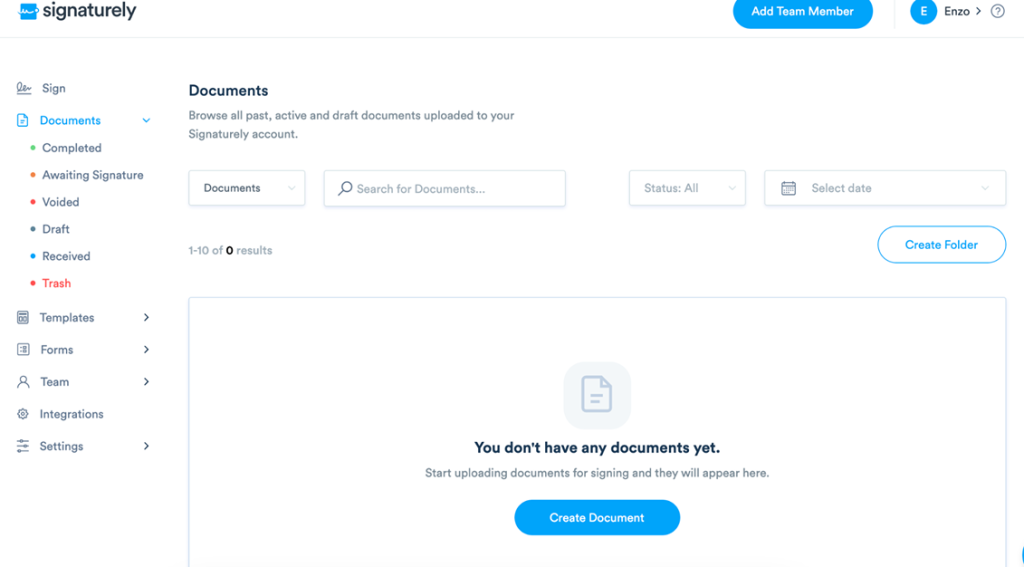
Next, you’ll want to upload the blank W9 PDF to your e-signature platform. Solutions like Signaturely allow you to take a PDF accounting contract template and convert it into a smart online form.
This automatically maps form fields to the W-9, acting like an online application. It also enables legally valid e-signing later on.
Step 3: Fill In Your Information
With your W-9 now an online form, carefully fill in each required section with your details:
- Name: Your legal name, whether an individual or registered business name.
- Business name: Only if different than above. Typically for a sole proprietorship..
- Address: Must match your official tax records.
- Tax ID: For most, it is your SSN or EIN if incorporated.
- Federal tax classification: Your tax entity type like individual, single-member LLC, or corporation.
- Exemptions: If any tax-exempt codes apply, enter them here.
- Certification: Sign and date to certify the details are accurate.
Filling out the required fields of the W-9 form properly is critical to avoiding problems. Pay special attention to the following sections:
Tax Classification
This indicates your business’s legal structure for tax purposes. Common options include:
- Individual/sole proprietor
- Single-member LLC
- Partnership
- Corporation
As a freelancer or independent contractor, you would likely choose Individual/sole proprietor.
Exemptions
If any tax-exempt codes apply to you, enter the appropriate one here. This includes exempt payee codes for:
- Corporations exempt from tax
- Tax-exempt business
- IRAs
Most individuals can leave this section blank.
Social Security Number
Enter your 9-digit SSN here. This ties the W-9 form to your personal tax records.
Certification
Sign and date the form here to certify the information is correct. This is vital for the legal validity of the W-9 form.
Remember, accuracy on your W-9 form avoids major headaches down the road if payments do not match IRS records for your SSN or business later on. Take your time filling everything out properly and check each appropriate box with the right information.
Step 4: Sign Your W-9 Form Digitally (And Legally)
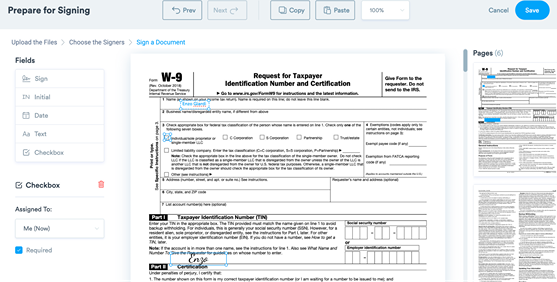
With all your information filled in, apply your signature using your finger, mouse, or stylus. Solutions like Signaturely create signatures that are legally valid and binding across all 50 states.
An e-signature holds up just like a wet ink one without needing printers, scanners, or snail mail.
Step 5: Download Your Filled Out W-9
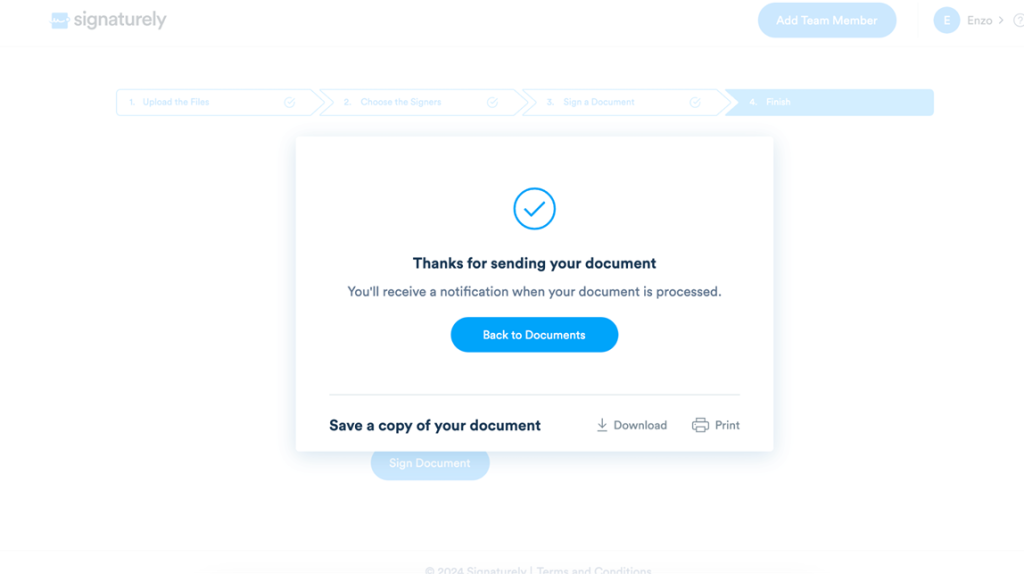
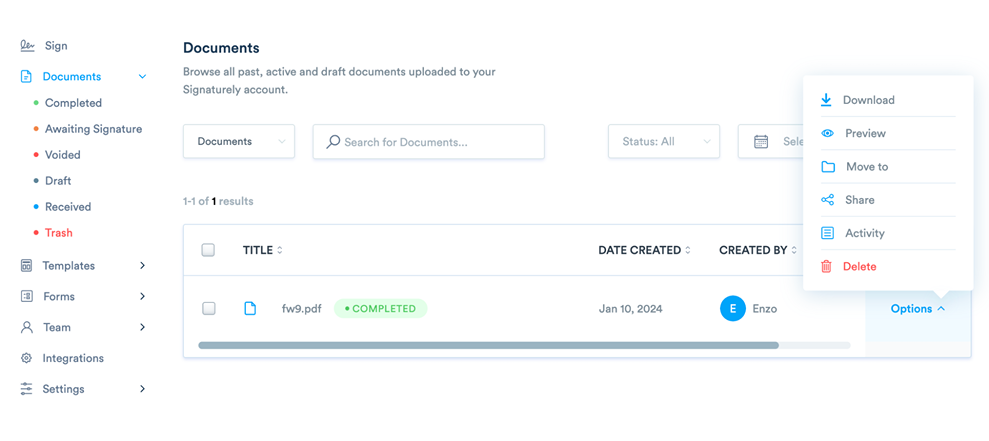
Finally, download a PDF copy of your finished, signed W-9 form to share or keep for your records. Make sure to download it before closing the form, or your entries could be lost. This is also important for bookkeeping your contract agreement templates.
Now, your W-9 form is ready to securely send to clients to get paid or submit if requested later on. Just attach the PDF to an email or file share link.
Submitting Your W-9
Once you have filled out and signed your W-9 form electronically, you do not need to submit it directly to the IRS yourself in most cases. The purpose of the W-9 is to provide your tax ID details to clients and businesses paying you so they can accurately report payments made to you later on.
Therefore, the main time you must submit your completed form is when a client or financial institution requests it from you. For example:
- Send to a client when you start contracting work with them so they can add your tax info to their system. This allows them to send you a 1099-NEC if you earn over $600 from them in a year.
- Provide to your bank or investment broker when opening an account that will earn taxable interest or investment income. This allows proper documentation for their IRS reporting.
- Share with property management platforms and agents when renting out real estate. Enables tax tracking on rental payments you collect.
Outside of when requested, you do not need to proactively file your W-9 directly with the IRS or include it with your tax return. Retain a completed copy in your records for at least four years in case questions arise later. This provides you proof that you shared the necessary details.
FAQs About How to Fill a W9 Online
Do you still have some questions? Here are answers to two common W-9 questions:
Follow our 5-step guide above. Download a blank form, use an e-signature solution to convert it into a smart form, fill in your details, sign the form digitally, and download a completed copy.
You typically only submit your W-9 form when requested by a paying business or financial institution. You do not have to file it with the IRS with your tax documents proactively. Just keep a completed copy of the form for your records.
What You Need to Remember About Filling Out a W-9 Form Online
When completing a W-9 digitally, focus on accuracy, sign legally, and retain a copy of your e-signature for accounting purposes. Only submit when requested by a payer. Following our guide for downloading, filling in, e-signing, and storing your W-9 form ensures you have proper documentation to avoid issues getting paid.
